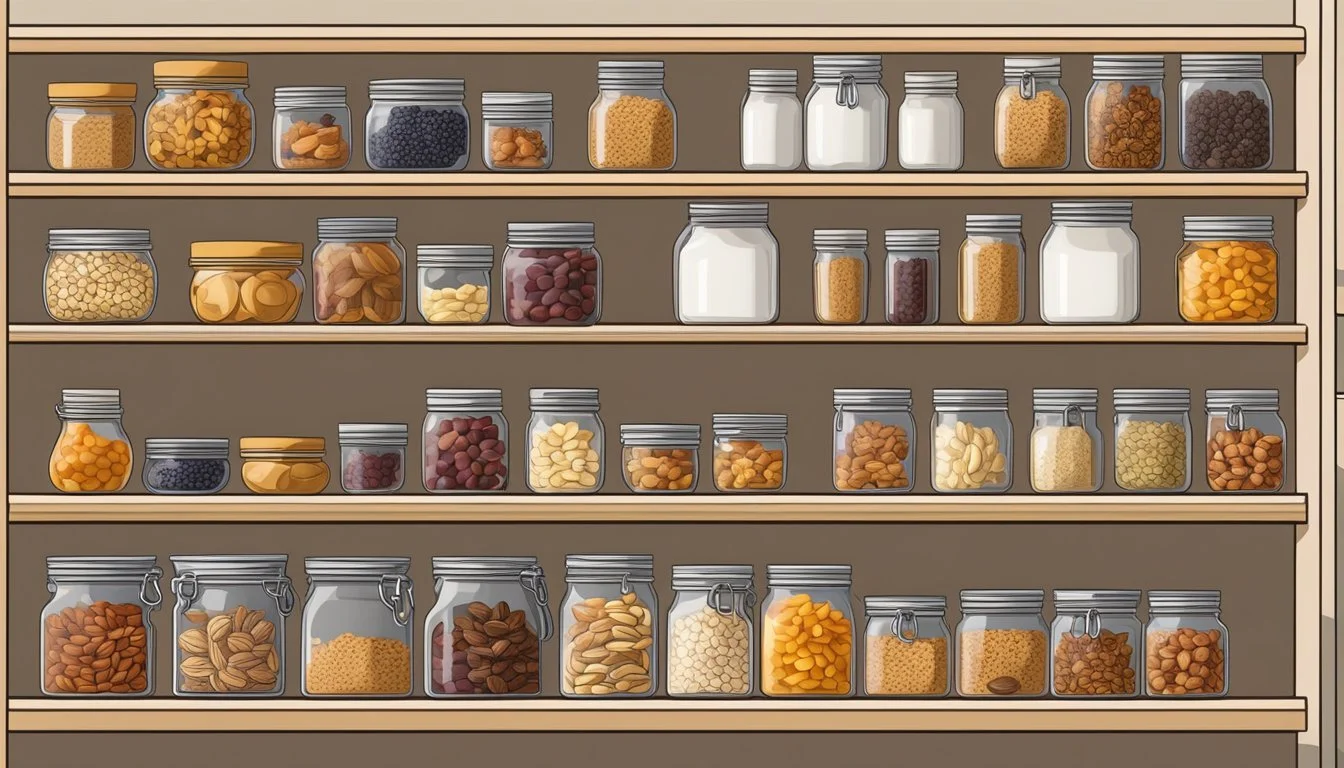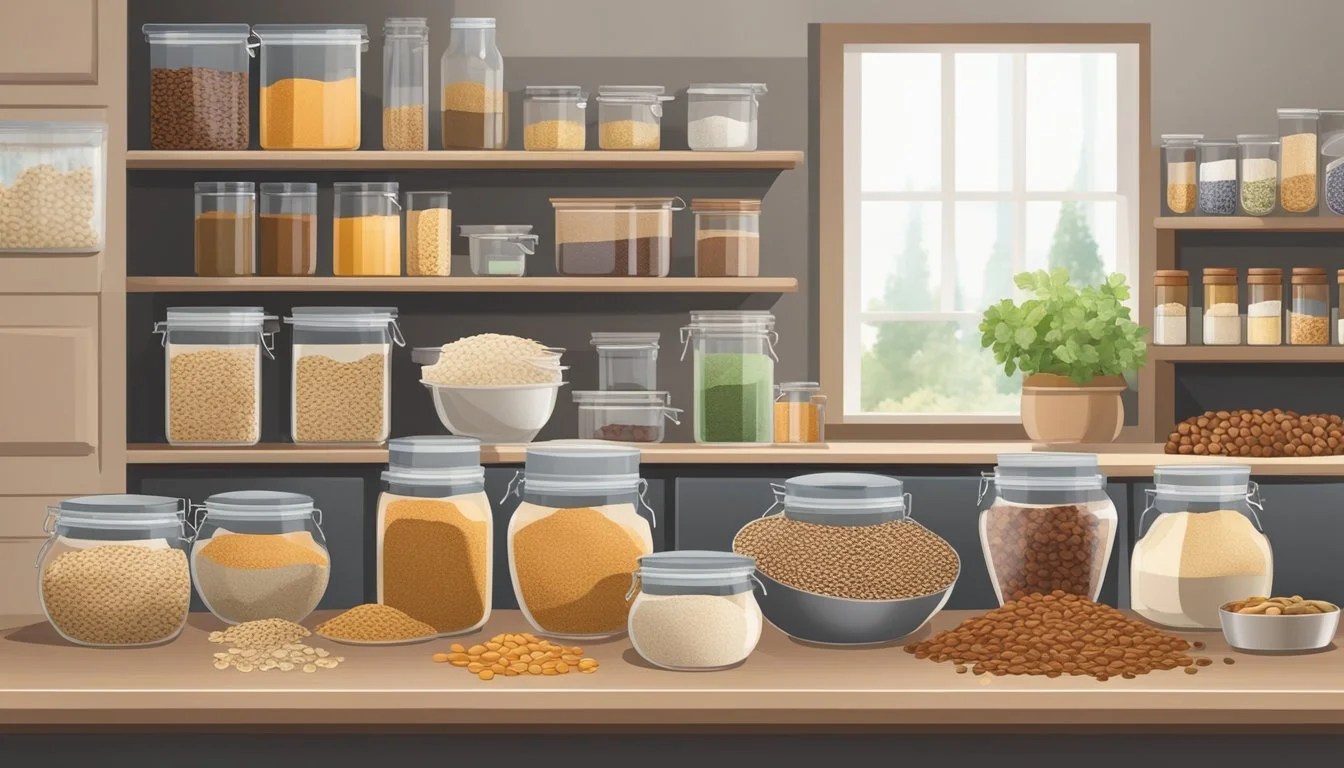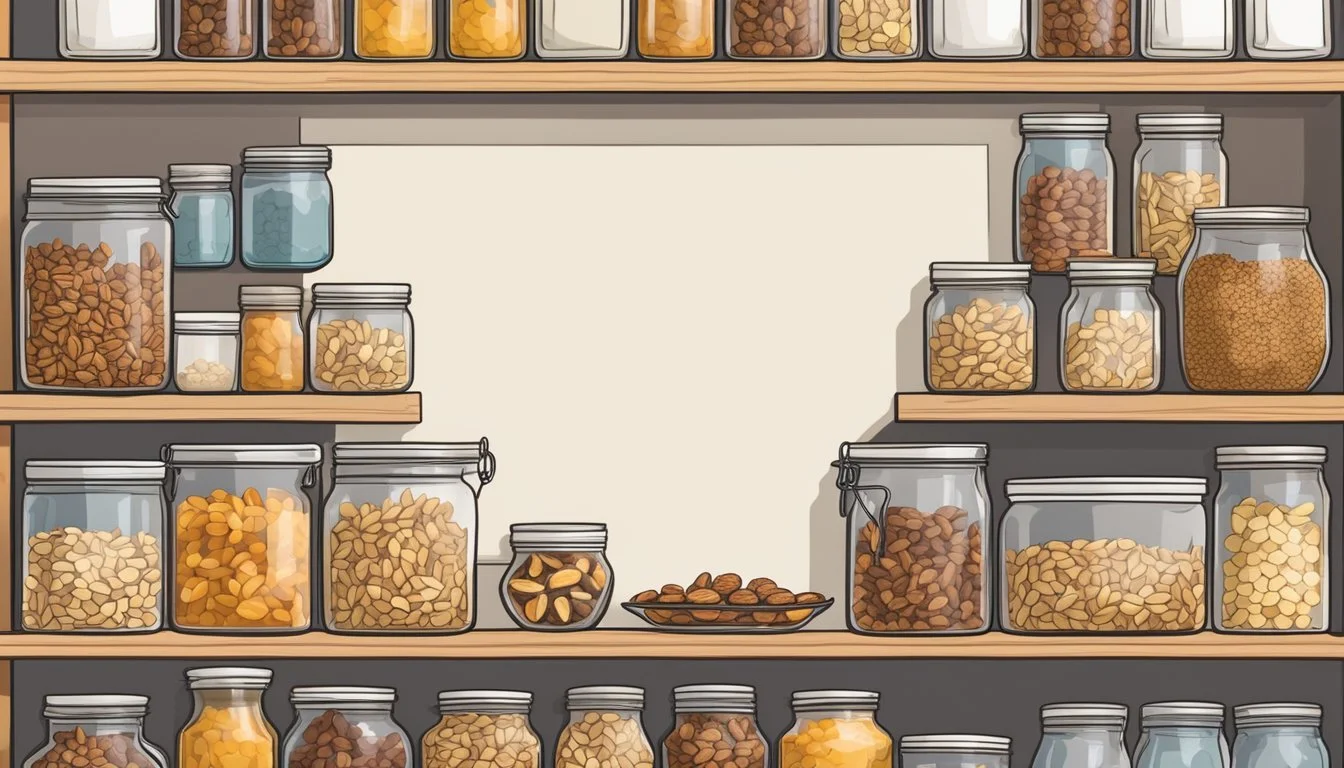Pantry Staple Granola Recipes
Quick and Versatile Ideas
Granola has solidified its place as a versatile pantry staple, loved for its customizability, health benefits, and ease of preparation. It's a food that finds its way into breakfast bowls, snack time, and even as a crunchy dessert topping. This wholesome treat typically combines oats with various nuts (What wine goes well with nuts?), seeds, and sweeteners, baked together to achieve a satisfying crunch. Its health appeal comes from its base of rolled oats, known for their fiber, and the nuts and seeds, which contribute good fats and protein, making it a nutritious option for a healthy snack.
Creating granola at home is straightforward and allows for endless variation. With a few simple pantry ingredients, one can concoct a batch tailored to personal taste or dietary needs. The process generally involves mixing the dry components, such as oats, nuts, and seeds, with chosen sweeteners and oils before baking to crisp perfection. This method provides a fresh, preservative-free alternative to store-bought versions, often laden with added sugars and artificial ingredients.
The adaptability of homemade granola recipes makes them a boon for the creative cook. Whether stirred into morning yogurt, sprinkled over fruit, or munched on its own, granola can be transformed with a host of add-ins like coconut, chocolate chips, or dried fruit. This easy-to-make snack supports the notion that a few basic ingredients from the pantry can yield delightful and nutritious results.
Essential Ingredients
Creating the perfect granola begins with understanding the key components that make up the base of any recipe. The right balance of oats, nuts, seeds, sweeteners, and oils can transform simple ingredients into a delicious and nutritious pantry staple.
Types of Oats
When it comes to choosing oats for granola, rolled oats or old-fashioned rolled oats are the preferred choice because of their texture and ability to hold together during baking. They provide a satisfying chew and are sturdy enough to support the added ingredients in granola.
Variety of Nuts and Seeds
Nuts and seeds are integral to granola, offering not only flavor but also a host of nutritional benefits. Common options include:
Nuts: Pecans, almonds, walnuts, and pistachios.
Seeds: Sunflower seeds, pumpkin seeds, flax seeds, and chia seeds.
Each brings its own unique taste and texture, along with healthy fats and protein.
Choosing Sweeteners
Sweeteners add flavor and clump the granola together. Choices can vary based on personal preference and dietary considerations:
Sugar: Light brown sugar provides caramel notes.
Natural Sweeteners: Honey and maple syrup offer sweetness along with subtle, distinct flavors.
Oils and Fats
Oils help in creating clusters and add a subtle flavor while ensuring the granola bakes evenly. Healthy fats typically used include:
Olive oil (also known as EVOO) for its heart-healthy properties.
Coconut oil (either melted coconut oil or solid), known for its sweet aroma and taste.
Flavorings and Spices
In creating pantry staple granola, the judicious use of flavorings and spices can transform a simple mixture into a delightfully aromatic treat. Here we'll explore how to use vanilla, cinnamon, and inventive spice blends to enhance your granola.
Using Vanilla
Vanilla is a classic flavor that brings a warm, floral aroma to granola. It's typically introduced in the form of vanilla extract, which should be stirred into the liquid ingredients to ensure even distribution. A teaspoon of high-quality extract can greatly enhance the overall flavor profile.
Incorporating Cinnamon
Cinnamon, often sought after for its sweet and woody notes, is a favorite spice in granola. When adding cinnamon, sprinkle it directly onto the oat mixture before baking, allowing the spice to evenly bake into the granola, producing a comforting, consistent taste. About half a teaspoon can suffice, but it can be adjusted to preference.
Creative Spice Blends
For adventurous palates, creative spice blends can create complex and unique granola flavors. Consider pairing the warmth of cinnamon with other spices such as nutmeg, ginger, or cardamom. Create a mix aiming for balance; a quarter teaspoon of each spice often works, but feel free to experiment. For a seasonal twist, incorporate a chai spice blend, which can complement the natural sweetness of the grains and nuts.
Fruit Add-Ins
Fruit add-ins offer a sweet and chewy contrast to the crunchy base of granola, with a variety of options to suit any taste. They can easily elevate a basic granola recipe, making it not only more nutritious but also more flavorful.
Dried Fruit Options
Dried fruit provides a concentrated burst of sweetness and chewy texture to granola. When selecting dried fruits, opt for varieties without added sugars or preservatives to keep the granola healthy.
Dried Berries: Include dried cranberries or cherries for a tart flavor.
Raisins: A classic choice, raisins add natural sweetness.
Dried Apples: Offer a mild, sweet taste with a hint of tartness.
Adding these fruits after baking is recommended to preserve their moisture content and prevent hardening.
Fresh Fruit Combinations
While fresh fruit is typically not baked into granola due to moisture content, it makes a great topping when serving. Fresh fruits not only add vibrant colors but also provide additional vitamins and a refreshing taste.
Berries: Fresh strawberries, blueberries, or raspberries can be sprinkled on top when serving.
Apples: Diced apples add a fresh crunch and pair well with cinnamon-flavored granola.
Remember to add fresh fruit just before consumption to maintain texture and prevent sogginess in the granola.
Preparation Techniques
Creating the perfect pantry staple granola recipe involves precision in preparation techniques. These techniques ensure a successful granola with the desired texture and flavor.
Mixing and Combining Ingredients
In a large bowl, one should thoroughly mix the dry ingredients, such as oats, nuts, and seeds, ensuring even distribution for consistent flavor throughout the granola. Liquid ingredients like oil and honey or maple syrup are heated separately until the sugar is completely dissolved, then combined with the dry mixture.
Baking for Crunchiness
Granola achieves its signature crunchiness through proper baking. The oven should be preheated to 350 degrees Fahrenheit. The mixed granola should be spread evenly on a baking sheet lined with parchment paper to prevent sticking. Baking time is crucial: too short and the granola may be chewy, too long and it could burn. The typical cook time for granola is around 30 minutes, but one should watch for a golden-brown color as a sign of readiness.
Achieving the Perfect Clusters
The secret to perfect granola clusters lies in the baking process and the cooling stage. After baking, one should let the granola cool completely on the baking sheet before breaking it into clusters. This allows the sugars to harden, creating those sought-after crunchy clusters. Additionally, pressing down the granola slightly before baking can help to form tighter clusters.
Customization Tips
Granola is a versatile pantry staple that can be tailored to fit various dietary needs and health goals. Customization allows for control over ingredients like protein and fiber, as well as adaptations for vegan and gluten-free diets.
For Added Protein and Fiber
Protein-packed ingredients:
Nuts: Almonds, pecans, walnuts, and cashews are excellent sources of protein and can be added to granola.
Seeds: Chia seeds, flaxseeds, hemp seeds, and pumpkin seeds not only add protein but also a boost of fiber.
Quinoa: A complete protein, quinoa can add a unique texture and nutrient profile when used in granola recipes.
Oats: Roll or steel-cut oats form the base for most granola recipes, contributing substantial fiber content.
Nuts and Seeds: In addition to their protein content, these add fiber that supports digestive health.
Making Granola Vegan or Gluten-Free
Vegan adjustments:
Sweeteners: Replace honey with agave syrup or maple syrup to maintain the granola's clumpy texture without using animal products.
Oils: Opt for coconut oil or other plant-based oils to add healthy fats and flavor.
Oats: Ensure the oats used are certified gluten-free to prevent cross-contamination.
Alternative grains: Use quinoa or buckwheat in place of traditional oats for a different twist and to keep the granola gluten-free.
By paying attention to the selection of seeds, nuts, grains, and sweeteners, one can easily customize granola to fit within specific dietary boundaries or health requirements.
Storing and Serving Suggestions
Proper storage ensures the granola maintains its freshness and crunch, while the right pairings can enhance its flavors and textures.
Best Practices for Storage
Storing homemade granola effectively is paramount to preserving its texture and flavor. Granola should be kept in an airtight container to prevent it from absorbing moisture and becoming stale. For optimal freshness, one can store granola in a cool, dry place away from direct sunlight. The shelf life typically ranges from two weeks to a month, depending on the ingredients used.
Ideal containers: Glass jars, zip-top bags, or plastic containers with tight-sealing lids.
Location: Store in the pantry, away from heat sources.
Labeling: Mark the container with the date of storage to keep track of freshness.
Serving Pairings
Granola is versatile and can be enjoyed in various ways, making it a convenient choice for breakfast or as a snack.
With dairy/non-dairy alternatives: Serve granola with yogurt, milk, or almond milk for a traditional breakfast or snack. The combination of creamy and crunchy textures makes for a satisfying meal.
Dairy/Non-Dairy Alternative Serving Suggestion Yogurt Layer for a granola parfait Milk Like a cereal Almond Milk For a dairy-free option
As a topping: Sprinkle granola on top of a smoothie or smoothie bowl for added crunch and nutrition. It can also be mixed with nut butter for a quick, energy-boosting snack.
Topping for Serving Suggestion Smoothie Bowls Sprinkle on top Nut Butter Mix in for a snack
Straight from the jar: Granola can be enjoyed as is, straight from the storage container, as a crunchy, satisfying snack.
Recipe Variations
When crafting the perfect granola, variations allow for personalization that caters to different tastes and dietary needs. Chocolate infusions can add a sweet twist, while nut-free options ensure those with allergies can still enjoy this crunchy treat.
Chocolate Infused Granola
She can transform ordinary granola into a chocolatey delight with a few adjustments. For a Chocolate Infused Granola, incorporating cocoa powder with the dry ingredients adds a rich, deep chocolate flavor. For bursts of chocolate in every bite, one may stir in chocolate chips after the granola cools post-baking to maintain their shape. Opting for dark chocolate chips can reduce the overall sweetness while adding a more intense flavor.
Ingredients for Chocolate Infused Granola:
1/4 cup cocoa powder (added with dry ingredients)
1/2 cup chocolate chips (stirred into cooled granola)
In terms of healthful additions, a person might choose chocolate with a high cocoa content to include antioxidants, or they could opt for sugar-free chocolate chips to lower the refined sugar content.
Nut-Free Options
For individuals who avoid nuts, Nut-Free Granola can be just as satisfying and flavorful. Instead of nuts, one can bolster their granola with a variety of seeds such as pumpkin, sunflower, or chia, which are all excellent sources of healthy fats. Sweetness in nut-free granola can still be achieved through natural sweeteners like honey or maple syrup, creating a palatable balance without the use of refined sugars.
Ingredients for Nut-Free Granola:
Seeds (pumpkin, sunflower, chia)
Liquid sweeteners (honey or maple syrup)
Incorporating whole grain elements like rolled oats ensures a hearty texture, and by seed selection, consumers can achieve a tailored taste and health profile. Adding a pinch of salt enhances the granola flavor, especially in the absence of nuts.
Nutritional Information
Granola is a popular pantry staple known for its versatility and nutritional benefits when prepared with a careful selection of ingredients. Typically, granola includes oats, nuts, seeds, and a sweetener, which together deliver a diverse profile of essential nutrients.
Calories: The caloric content of homemade granola varies depending on the ingredients used, but it generally ranges from 200 to 300 calories per serving (approximately 1/2 cup). Granola is energy-dense, meaning a small portion size carries a significant number of calories.
Carbohydrates: Oats, the base ingredient in granola, are a good source of carbohydrates. A serving size might contain anywhere from 20-30 grams of carbohydrates. This provides the body with necessary energy and supports digestive health due to its dietary fiber content.
Nutrient Estimated Amount per Serving Fiber 3-4 grams Protein 5-10 grams Sodium Variable
Fiber: The inclusion of whole grains like oats, nuts, and seeds contributes to the fiber content of granola. Consuming fiber supports digestive health and helps maintain steady blood sugar levels.
Protein: Nuts and seeds are excellent protein sources which increase the protein content of granola. A typical serving may offer between 5-10 grams of protein, essential for muscle repair and growth.
Sodium: Homemade granola recipes can be low in sodium, particularly if one opts not to add salt. However, some recipes call for a small amount of salt to enhance flavor, contributing to the sodium content, which should be monitored, especially for those watching their sodium intake.
It is worth noting that while nutritious, granola is best consumed in moderation due to its calorie density and potential sugar content from added sweeteners like honey or maple syrup. For a healthy balance, one should pay attention to serving sizes and choose natural, unprocessed ingredients where possible.
Sharing Your Creations
Once a delicious batch of pantry staple granola is ready, showcases it to the world can inspire others and celebrate your culinary achievement. This section guides you on how to vividly articulate the visual appeal of your granola through Instagram-worthy photos and how best to engage with an online community on platforms such as Instagram, Facebook, and Pinterest.
Instagram-worthy Photos
To capture Instagram-worthy photos of your granola, utilize natural lighting and simple backgrounds to make the textures and colors pop. Arrange the granola elegantly on a plate or spread it out on a parchment-lined baking tray. Consider including props like measuring spoons or ingredients to add context to your image. A thoughtfully arranged recipe card within the frame can serve as both a visual and practical element. The recipe card should contain:
The granola recipe name in a bold font.
A short list of ingredients in italic.
Concise preparation steps.
By adhering to this format, you ensure the photo informs and appeals to viewers, encouraging replication and shares.
Engaging on Social Media
Engagement on social media platforms like Facebook, Instagram, and Pinterest hones the spread of your granola creations. When posting the image, incorporate several pertinent hashtags (#granola, #homemade, #healthy) to increase visibility. Reply promptly to comments and questions to foster a sense of community. Providing a recipe card in the post can further engage viewers as they may save your recipe for future use, share it, or tag their own versions of your granola, creating a cycle of interaction and sharing within the granola-making community.










